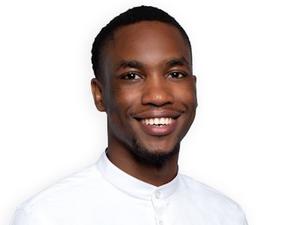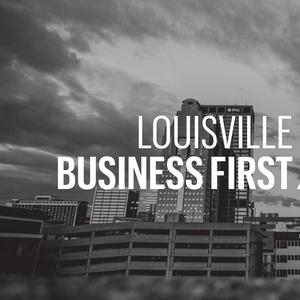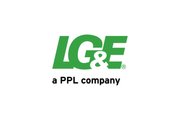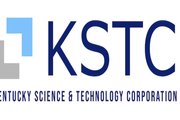
It took Greg Siener and his best friend Mike Zumer three tries to build a retaining wall in his backyard in 1996, during which Siener had a thought.
“We jokingly said, ‘you know, if we had some big ole damn Legos, it would make this job a whole lot easier,” Siener said. “And we laughed.”
While just a joke at first, the thought weighed on him. The next day, he drew out the idea by hand. At the time, Siener and his brother Steve ran a company that did automation controls and electrical engineering, specializing in material handling systems.
He ran the idea by his brother, suggesting they toy with the idea. That initial concept became Lok-N-Blok, an alternative building material made partially from recycled plastic that can be stacked and locked into place like a Lego.
Siener is now president and CEO of Plastiblok, the Paducah, Kentucky-based company that produces Lok-N-Blok. The product is receiving national attention because of its simple construction, scalability and sustainability.
The plastic block is made from 50% polypropylene, something Siener said is considered a green plastic. About 47% of the polypropylene is recycled polypropylene. The plastic compound can be ground down and used again, so scraps from a contractor’s job site don’t go to waste.
“We don't do anything chemically to our product,” Siener said. “We produce it so it can be A., reground and put into other materials, but B., reground and put back into our process to make more.”
Another sustainable aspect of Lok-N-Blok is that it can be reused. When a building is used with the stackable product, it can also be deconstructed, and the individual blocks can be used again.
This doesn’t diminish Lok-N-Blok’s durability, however. The product remains just as strong as other materials with the ability to withstand elements like fire, water and mold, as well as absorb sound.
“It's 10 times stronger than a concrete block from a design standpoint,” Siener said.
While the product got its start over 20 years ago, it’s yet to be used in the U.S. The Siener brothers and Zumer formed Plastiblok in 2012 after receiving the patent a few years earlier. That same year, it created the prototype. The biggest hang up since has been getting it tested and approved.
“We created a brand-new building product, a brand-new building category for composite reinforced structural building products,” Siener said. “And so, it's completely out of the ordinary for even code officials. As they're looking at it, they're looking at something brand new.”

There wasn't a testing criteria applicable to the block. Plastiblok had to work with the International Code Council to develop a code process just to be able to test the product and bring it to market.
That process took from August 2012 to June 2018.
“We were held up for six years, just strictly developing code, developing a testing criteria, how we were going to test it to prove to engineers and architects, code officials, that this is a suitable product,” Siener said.
Once the testing was created, it took a couple of years to go through that process. Plastiblok finally completed testing and launched the Lok-N-Blok in February of this year at the International Builders Show in Orlando, Florida.
After introducing the product to the public at the show, Siener said the company received thousands of inquiries wanting to learn more. Plastiblok started submitting the design to several states, including Kentucky, to gain building code approval.
“In talking with the commissioner in the state of Kentucky, he's like, we have to ensure that when people build this, it's not going to fail,” Siener said. “We hired an independent lab to do all our tests, which is required by the ICC, and we have opinion letters from our third-party lab that says we meet the code. Even then, they don't want to rely on the opinion of somebody else.”
That’s where Lok-N-Blok stands now, in the U.S. that is. While it’s still awaiting approvals from specific states, it has been accepted in five other countries and will be used in some upcoming projects, the first of which is in Peru.
The first major project using Lok-N-Blok is 40,000 apartments all throughout Peru to house the Peruvian military and police. Siener said the block was approved by the Minister of Housing and Urban Development in Peru within just a few months of its launch.
That project will be several hundred million dollars funded by the government in Peru, Seiner said. The general contractor is global firm Meriton Group, based in Australia, and the architect on that project is Zyscovich out of Miami, Florida.
It is expected started in the first quarter of 2023, and it’ll be a 5-year process. After that, the country already wants to use the block on a new hotel and airport in Cuzco, the city home to Machu Picchu. Those plans are being designed now.
Other projects in the works are affordable housing initiatives in Guatemala and the Dominican Republic.
Siener said foreign countries have been much more willing to take advantage of the block. One reason is the lack of water used in construction process. Construction sites that use cement need mass amounts of water, and water is a precious resource to those countries. He said that was a selling point for the Peru projects.
“We have had inquiries as much outside the U.S. as we've had inside the U.S.,” Siener said. “I've got a database of over 20,000 names of people that have inquired about our product, and I could easily assume that 50% of our foreign contacts.”
He declined to disclose the company's annual revenue. Kentucky Science and Technology Corporation invested $4 million in 27 Kentucky companies, one of which was Plastiblok.
Plastibok is continuing to work to get the block approved in the U.S. Siener believes the product can not only help minimize the construction industry’s carbon footprint but create more housing at a faster rate because of the simple building process.
“We've created a product that has the ability to touch humanity and the entire world,” Siener said. “Everybody needs housing, so no matter where you're at, no matter what country you're in, no matter where you're located this product can impact you.”











